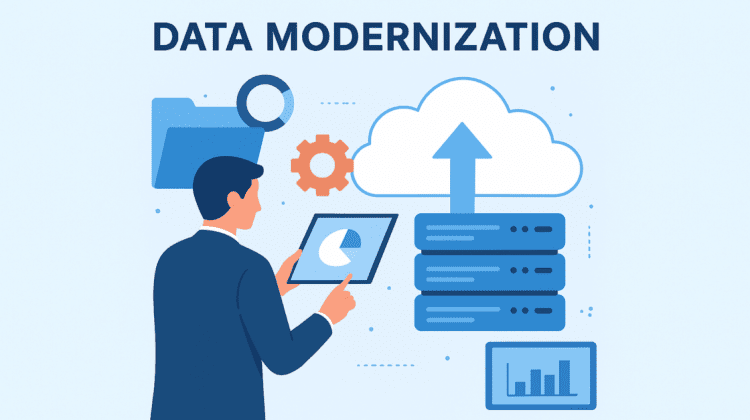
Every organization relies on data to run its daily operations, but the way that data is stored, accessed, and managed can make all the difference in performance and security. Legacy IT environments, while once reliable, now often stand in the way of agility and growth. Old systems tend to create bottlenecks, security gaps, and operational risks that can quietly erode business value. That is why many technology leaders are evaluating how data modernization services can help them address these challenges while laying the groundwork for innovation.
The Risks Hidden in Legacy Systems
Legacy IT environments are not just outdated, they often bring a host of risks that accumulate over time. These include compatibility issues with modern applications, vulnerability to cyberattacks, higher costs of maintenance, and difficulty in scaling with business growth. When systems cannot handle today’s data volumes or formats, organizations face inefficiencies that directly impact customer satisfaction and revenue. For CTOs and technology heads, this creates a pressing question: how long can legacy systems be patched before they begin to fail altogether?
Building a Stronger Foundation Through Modernization
The core idea behind modernization is not just about replacing old technology but transforming how data is used across the enterprise. By restructuring systems and processes, organizations move away from fragile environments and gain a foundation that is scalable, resilient, and secure. The transition also makes it easier to adopt advanced capabilities such as analytics, automation, and artificial intelligence, all of which rely on clean, accessible, and real-time data. In this way, modernization becomes less about technology replacement and more about risk reduction and business readiness.
Minimizing Operational and Security Risks
One of the primary risks with legacy systems is that they are no longer supported or regularly updated by vendors. This exposes businesses to security vulnerabilities and compliance failures. Modernization addresses this by moving workloads and data into supported, cloud-native systems where updates, patches, and security monitoring are continuous. By integrating modern authentication, encryption, and monitoring practices, organizations reduce the likelihood of breaches and data loss.
From an operational perspective, modern systems also minimize downtime. Legacy environments are often fragile, where a small misconfiguration or failure in one part of the system can cascade into large-scale outages. Data modernization introduces redundancy, automated recovery, and intelligent monitoring that significantly lower the chances of disruptions.
Unlocking Scalability Without Added Complexity
Another form of risk often overlooked in legacy systems is the inability to scale efficiently. As businesses grow, the amount of data they produce multiplies, and older platforms struggle to keep up. This creates a risk of performance bottlenecks, unreliable reporting, and slow customer-facing processes. Through cloud data modernization, organizations can align infrastructure with real demand. They pay only for what they use while gaining flexibility to expand or contract resources based on business needs. This not only reduces technical risk but also optimizes costs.
Enabling Smarter Decision-Making
Risk is not always about security or downtime; it can also come from poor decision-making due to bad data. Legacy systems often create silos where data is fragmented and inconsistent. This means leaders are making decisions based on incomplete or outdated information, which carries its own business risks. With data modernization solutions, companies unify their data, eliminate duplication, and establish single sources of truth. Accurate, real-time insights reduce the risk of missteps and improve strategic agility.
Compliance and Regulatory Confidence
In industries like healthcare, finance, and logistics, compliance is a non-negotiable part of operations. Legacy systems often lack the tools needed to ensure compliance with evolving regulations, making organizations vulnerable to penalties and reputational damage. Enterprise data modernization brings in stronger governance frameworks, audit trails, and compliance-ready structures. These measures ensure that businesses not only meet current standards but are also prepared for new ones as they emerge.
Creating Long-Term Business Resilience
The ultimate goal of modernization is not just reducing today’s risks but building a resilient architecture that adapts to the future. When businesses modernize, they are better positioned to handle unexpected disruptions, whether they come in the form of cyber threats, sudden market changes, or shifts in customer expectations. Resilience comes from flexibility, and flexibility is only possible when systems are modern, interconnected, and intelligently managed.
Final Thoughts
The risks of legacy IT environments are no longer theoretical-they are real challenges that can hold back growth, create vulnerabilities, and erode trust. By investing in modernization, organizations can reduce security risks, ensure compliance, improve performance, and unlock better decision-making capabilities. For technology leaders, the choice is not simply about upgrading systems; it is about safeguarding the business and preparing for the future. In a data-driven world, modernization is not optional-it is a critical step toward sustainable success.
;


